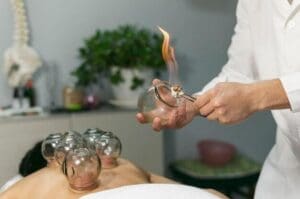How does Acupuncture work?
Acupuncture works by improves the body’s functions and promotes the natural self-healing process by stimulating specific anatomic sites known as acupuncture points, or acupoints. The most common method used to stimulate acupoints is the insertion of fine Hair like, sterile needles into the skin. Pressure, heat, or electrical stimulation may further enhance the effects.
Traditional Chinese Medicine is based on an ancient philosophy that describes the universe, and the body, in terms of two opposing forces called yin and yang. When these forces are in balance, the body is healthy. Energy, called “qi” (pronounced “chee”) flows along specific pathways, called channels, throughout the body. This constant flow of energy keeps the yin and yang forces balanced. However, if the flow of energy gets blocked, like water getting stuck behind a dam, the disruption can lead to pain, lack of function, or illness. Acupuncture therapy can release blocked qi in the body and stimulate function, evoking the body’s natural healing response through various physiological systems.
Modern Western Research has come to believe that the fascia is what the ancients called channels. Fascia is a sheet of connective tissue, primarily collagen, beneath the skin that attaches, stabilizes, encloses, and separates muscles and other internal organs. This fascia is everywhere in the body. Each organ is wrapped around fascia and then that fascia is compartmentalized around more fascia. This fascia runs from your head to your toes. So a needle in your foot has ability to effect your stomach or head. Research demonstrated acupuncture’s effects on the nervous system, endocrine and immune systems, cardiovascular system, and digestive system. By stimulating the body’s various systems, acupuncture can help to resolve pain, and improve sleep, digestive function, and sense of well-being.


